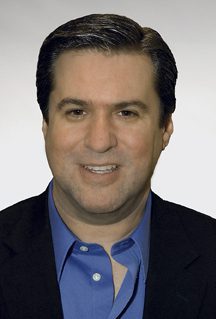SMILE! DO YOU SEE WHAT I SEE?
Dental and vision remain must-haves in benefits packages
By Christopher W. Cook
The Broadway musical Annie reminded us that “You’re Never Fully Dressed Without a Smile,” but a smile is more than just shining one’s pearly whites. Having healthy teeth is not only a sign of good oral health but also of overall wellness, according to The Fifth Annual Guardian Workplace Benefits Study, conducted in the spring of 2017.
Research shows that having healthy teeth and gums is important to one’s self-esteem, and regular dental exams can help with early detection of serious medical conditions.

-Wendy Herndon
Second Vice President of Product Solutions
Aflac
“There are numerous published studies linking the benefits of dental offerings to the early detection of several diseases, including diabetes, cancer, high blood pressure and high cholesterol,” says Wendy Herndon, second vice president of product solutions at Aflac. “The Mayo Clinic notes a potential connection between poor oral health and a variety of diseases, including heart disease, diabetes and more.”
“Chronic medical conditions such as cardiovascular disease or diabetes can have oral manifestations,” adds Alan Hirschberg, vice president of supplemental health products at MetLife. “Controlling dental disease such as gum (periodontal) disease with the aid of a dental plan can have positive effects on the control of diabetes. Employers realize that employees who use their dental plans are healthier and more productive.”
The Guardian study shows that 58% of those who visited a dentist twice a year reported that they had “excellent” or “very good” oral health; 42% had similar results for physical health, and 52% for emotional health. This was compared to 20% (oral), 25% (physical), and 35% (emotional) for those who visited a dentist less than twice a year.
While twice a year may not seem like a hassle—imagine that your dentist is Orin Scrivello from Little Shop of Horrors (another Broadway reference!)—77% of those surveyed with dental benefits visit at least once a year.
It’s obvious that offering dental benefits is a good thing, but why would some who are offered the product not use it?
Almost half—four out of 10—employees surveyed stated that high cost of dental services was the primary reason for not going to the dentist (They might be singing “If I Were a Rich Man” from Fiddler on the Roof; reference number three!).
“Rising medical costs continue to give ancillary benefits less shelf space, making cost more of a differentiator,” says Hirschberg. “The market continues to be very competitive from a price perspective. Savvy carriers set pricing to establish a long-term relationship with their customers, with the goal to price competitively, but not chase overly aggressive pricing that occasionally emerges in various areas of the country.”
When developing a dental benefits package, employers need to keep in mind what their employees want.
“More employers and employees want choice, so dual-option plan designs with a lower-cost core option and a more comprehensive enhanced option have become more popular,” says Hirschberg. “This allows employees to choose the plan they want based on cost and their oral healthcare needs.
“Also, plans are adding coverage for services employees want, such as composite (tooth-colored) fillings and dental implants. Another trend is increasing annual maximums to provide more value as well as to drive participation. After all, employers want employees to use their plan and maintain their dental health; in addition, a desirable dental plan attracts and retains employees, which is important in a competitive labor market.”
Adds Herndon: “Employees are looking beyond the benefits offerings and making the customer experience more of a priority. For example, they are looking for convenience through mobile accessibility of information about claims and coverage, in-network costs and their ID cards. They also expect a platform that allows them to find and compare care providers easily.”
“Engagement is becoming more important as employees and employers want effective access to benefit and health information so they can make informed decisions and self-serve in a modern world,” says Hirschberg. “This requires carriers to make investments in technology to move toward digital platforms, integration, and omni-channel development.”
You can’t see me
Please tell me that at least one person reading this did the WWE Superstar John Cena hand motion while reading the subhead above. Anyhoo, similar to dental, having healthy vision also contributes to one’s overall health.
“As consumers become more aware of eyesight issues in this digital age, vision care is becoming a core benefit, both valued and needed,” says Hirschberg. “Today, in the workplace and when off work, digital eye strain is increasing—including dry eye, headaches, blurred vision, and neck and shoulder pain—and can occur after just two hours of screen viewing.
“According to research by the Vision Council, 80% of adults report using digital devices (smartphones, tablets, laptops) for more than two hours per day, and two-thirds report using two or more devices simultaneously. Individuals can get glasses just for use with digital devices to help reduce associated eyestrain, even if they otherwise have no need for full-time prescription eyewear,” Hirschberg says.
“MetLife offers a Computer Vision Care rider at low cost that provides an additional pair of eyeglasses specifically for computer and other digital device usage.”
“Diabetic retinopathy is one of the most preventable causes of vision loss and blindness,” adds Herndon. “While early detection and treatment can prevent or delay blindness as a result of diabetic retinopathy in 90% of people with diabetes, 50% or more of those at risk do not get their eyes examined or are diagnosed too late for effective treatment, according to the CDC (Centers for Disease Control and Prevention).”
“There is a growing interest in benefits for those with no need for visual correction,” says Hirschberg. “Some of our customers have embraced the need for vision exams when they don’t need vision correction. The reason? A vision exam identifies much more than simply the need for eyewear, and with more people willing to visit an optometrist before visiting their medical doctor, vision exams identify early indicators of diseases such as glaucoma, hypertension, diabetes and high cholesterol, long before they become chronic diseases.”
Like dental, options are available for vision benefits, including ways to encourage employees who may have 20/20 vision.
“To encourage those who don’t need corrective lenses to visit their optometrists, offer them sunglasses,” says Hirschberg. “We have a vision plan rider known as SunCare. If a member’s vision exam shows no need for corrective eyewear, the rider permits them to use their frame allowance for non-prescription eyewear. This encourages them to get their routine wellness vision examination and spot those early issues that can become costly medical expenses for employees and employers alike.”

-Alan Hirschberg
Vice President, Supplemental Health Products
MetLife
The benefits
Offering dental and/or vision benefits in a package is a common trend amongst employers. According to the Guardian study, eight in 10 working adults have some form of dental coverage—69% being provided by an employer-sponsored plan.
“Most employees today expect companies to offer vision and dental insurance as part of a more robust benefits package,” says Herndon. “Providing vision and dental with additional supplemental policies is critical to employee morale, as well as to worker satisfaction and retention.
“In fact, the 2018 Aflac WorkForces Report found that 55% of American workers are at least somewhat likely to take a job with slightly lower pay but a better benefits package. Additionally, more than one-third of workers either completely or strongly agreed that an improved benefits package would help keep them in their current job.”
“We bring together dental, vision, life, disability, legal services and accident benefits to help design a bundle that fits employers’ needs and helps keep their benefits program competitive,” says Hirschberg. “While dental and vision are a natural bundle to promote preventive care and enhanced health and wellness strategies, there is added value in bundling other products as well. Pairing them with disability, life, auto, home, legal or accident products gives employers the flexibility to offer competitive solutions and create plan options that achieve the right balance between cost and coverage needs.”
As for the future of vision and dental?
“Historically, we haven’t seen a lot of changes in the area of dental and vision plans; as with other product lines, however, we are starting to see ‘reward’ programs pop up,” says Herndon. “For example, some plans are paying more for preventive visits or not counting the preventive visit toward the plan’s annual maximum to encourage policyholders to focus on healthy rewards for these services, which in turn can affect medical costs. Allowing patients to roll over remaining plan dollars to the next year is also a trend that continues in the market.”
Adds Hirschberg: “While telemedicine is becoming a standard in medical coverage, it is just emerging for dental and routine vision care. There are a number of new entrants into this field, so carriers are continuing to monitor and help shape how these new approaches will play in future employee benefit plans. This does appear to be a growing trend for the ‘digital generation’ that prefers self-service.”
Imagine “Some Enchanted Evening” (South Pacific) and “Ya Got Trouble” (The Music Man) with your eyes or teeth. “Wouldn’t It Be Lovely” (My Fair Lady) if we were all “Satisfied” (Hamilton) with our employee benefits plan? Well, “Put on a Happy Face” (Bye Bye Birdie) and “Always Look on the Bright Side of Life” (Monty Python’s Spamalot), because dental and vision coverage aren’t going away.
By the way, what do all these Broadway musical references have to do with dental and vision benefits? Nothing to my knowledge. I just like to see my creativity on the page; it makes me smile.
For more information:
Aflac
www.aflac.com
MetLife
www.metlife.com






